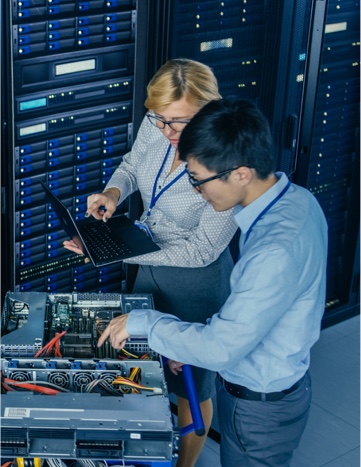Risk assessment to do away with the dilemma of end of life of equipment
Risk assessment to do away with the dilemma of end of life of equipment

By Franquelin Lopes, Business and Technical Development Manager at Jiliti

Driven by the demands of an ultra-competitive market, hardware manufacturers and software publishers are focusing their resources on innovation.
In their catalogs, new generations of products are continuously replacing the oldest. Life cycles are relatively short at around 5 years and usually follow the same pattern: the first year is marked by many versions correcting design flaws; from the second year, new features are added along with some further minor corrections; from the third year, developments are few and far between; finally, in the fourth and fifth years, only new features are offered, often superfluous and sometimes harbingers of the next generation.
After these five years, no corrections are made. The equipment reaches its End of Life (EOL), then its End of Support (EOS), after which the manufacturer does not guarantee the availability of spare parts or technical skills. To be sure of having all the latest features and related services, clients are therefore encouraged to do a ‘tech refresh’, i.e. to replace their old systems with the most recent. However, users are generally not in such a hurry to give up equipment that works and does its job perfectly well. They do not always see a technological benefit that would justify changing a tried-and-tested environment that has proved satisfactory. And financially, prolonging the life of equipment improves the TCO and therefore increases the initial return on investment. So not only do many clients keep their machines long after the EOL/EOS, but it is common not to do any updates after initial production. In the interests of stability and reliability, we hardly ever risk touching the technical base as approved during the integration phase, which could affect service quality or undermine interoperability.

This creates a discrepancy between the mixed reality of the data center and the ideal of state-of-the-art technology. As equipment approaches its end of life, this kind of technical debt puts CIOs in a dilemma: should they not change anything as long as it works, and move forward without a safety net, or carefully follow the manufacturer’s recommendations, at the risk of destabilizing the infrastructure? As is often the case in IT, there is no automatic answer. Even after EOS, it is still possible, for example, to find parts, skills and advice on the market to keep equipment operational if necessary. Whatever the type of equipment and stage of the life cycle, pragmatism is necessary to choose between leaving it as it is, upgrading it or replacing it.
The best way to make this decision is to assess and balance the risk involved in each scenario. To this end, we will have a risk assessment carried out by a trusted expert, independent of manufacturers and their interests. This analysis starts with an audit in which we list, on one hand, the equipment (model, configuration, use, etc.) and on the other hand, the hardware and software events that will soon affect the infrastructure (EOL/EOS, updates, patches, etc.).
This inventory allows us to determine the overall impact of a change, at the level of each link in the technical chain, and therefore the risk, benefit or need for it. When choosing between replacing equipment or prolonging its life, this allows us to take into account the consequences for the entire technical and operational environment.
We can carry out this assessment on an ad hoc basis, in particular when critical equipment is approaching end of life, but making it an ongoing activity gives us a valuable infrastructure monitoring and steering tool. Thanks to this dynamic and holistic view of infrastructure, we can use objective criteria to better prioritize investment and plan the modernization of the fleet, with a particular focus on targeted streamlining of expenses and greater certainty with regard to service quality.


